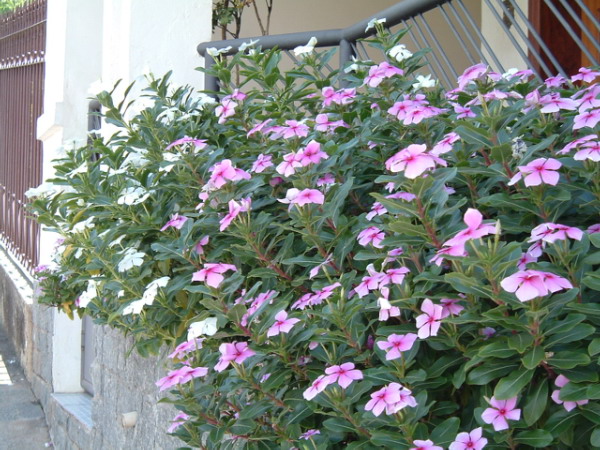As you walk the around the garden a guide will crush leaves to reveal the smell (this is particularly good on citrus trees, but also on others such as clove and camphor) or they will point out oddities – you can guess what the red film of the lipstick palm looks as though it might be used for, but what about the sandbox tree – in fact it takes its name from its pods, which were once used for containing blotting sand (to dry ink on the page).
Here are few of my favourite Caribbean oddities, discovered in various botanical gardens over the years -
Quinine, used in the treatment of malaria, comes from the bark of the cinchona tree, which grows best in cloudforest - at high elevations.
 The periwinkle, a pretty pink flower on an unassuming green bush, has been used in the treatment of cancer.
The periwinkle, a pretty pink flower on an unassuming green bush, has been used in the treatment of cancer.Pimento, a spice that grows particularly well in Jamaica, is also called allspice (because it tastes like so many other spices combined – cinnamon, cloves and nutmeg for instance). The spice comes from the berries and the wood is used to flavor jerk food when cooking. Allspice can even be used to cure and dye leather.
What fruit would a cannonball tree give up? You’ve guessed it, a massive, woody ball. Interestingly this huge tree has very delicate flowers, which open at night and fall to the ground with the light of dawn.
Mahogany tree pods explode, releasing a spray of whirligig seeds (a bit like a sycamore).
In Haiti, one type of hibiscus is known as Choublac (literally ‘shoe-black’). In years past in this extremely poor country it was used to provide an inky black juice that could be used as a replacement shoe polish.
For more information see the Definitive Guide to Caribbean Gardens and Flowers.















It is amazing all the colorful flowers and spices that grow in the Caribbean. I didn't know that Allspice is also called Pimento. You have an extremely informative blog here.
ReplyDelete